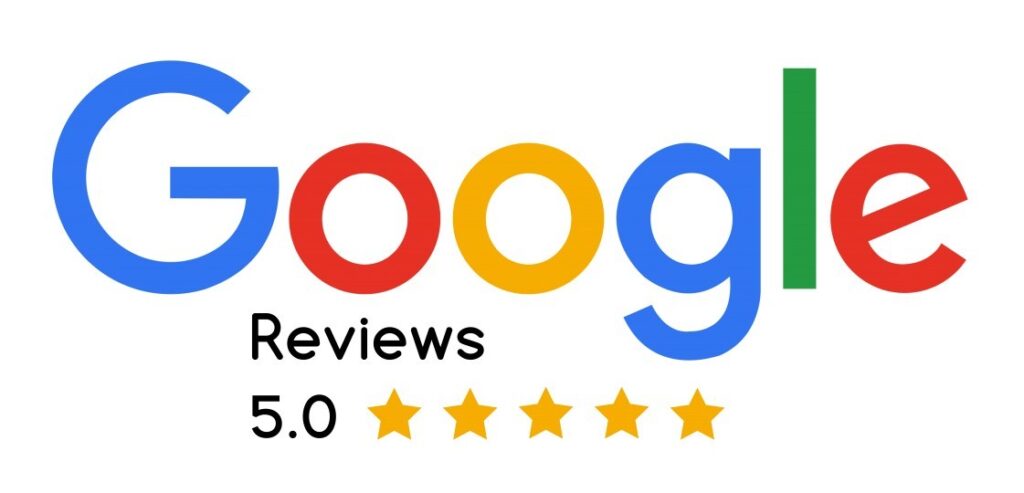In the modern age of business and technology, a strong digital marketing strategy is absolutely crucial to organizational success. Companies that thrive in the digital world typically allocate significant resources to the development of digital marketing strategies. In the process, organizations can reach customers across various digital platforms, driving positive revenue gains and improved conversion rates.
From a higher-level standpoint, marketing strategy is the process of identifying specific marketing goals. An overall marketing strategy will highlight achievable goals for both traditional (print, radio, broadcast) and digital channels. Using established strategies and goals, compelling marketers will evaluate various marketing tactics necessary to achieve those strategic goals.
What Does a Digital Marketing Strategy Look Like?
Digital marketing strategy involves an assessment of specific goals that are achievable through online channels. In an era when many consumers transact business on their mobile devices, a well-executed digital marketing strategy can be crucial to organizational success.
In this context, it is important to audit the current state of an organization’s media assets. Viewed through a macro lens, this means that marketers need to evaluate their organization’s owned, paid, and earned media:
- Owned Media — Owned media represents any communication channels that an organization owns and operates under their complete control. From websites and blogs to podcasts and video channels, organizations can leverage owned media to fit just about any marketing strategy or tactic.
- Paid Media — Paid media refers to content that third parties display in exchange for compensation from the owner. From sponsored content to influencer marketing and digital advertising, paid media is prevalent in many digital marketing strategies.
- Earned Media — Earned media refers to third-party content that is completely separate from the company or brand. In the digital world, this type of exposure often occurs in the form of awards, testimonials, reviews, or user-submitted content.
Ultimately, a digital marketing strategy will seek to maximize the impact of owned, paid, and earned media in the digital world. Consequently, these marketing strategies will encompass multiple channels and approaches — spanning website content and blogs as well as online advertising, testimonials, and reviews. At the end of the day, a digital marketing strategy will change based on the type of business and industry in question.
How Is Marketing Strategy Different from Marketing Tactics or Campaigns?
Whereas marketing strategy involves identifying goals, marketing tactics represent the specific steps or actions needed to achieve those goals. In the process of creating a marketing strategy, it is necessary to create tactics as well to delineate the plan and the timelines. Otherwise, it may be difficult — if not impossible — to properly execute a marketing strategy and achieve marketing goals.
Digital marketing campaigns are also vital to evaluate in this discussion. These digital campaigns involve the execution of marketing strategies across all of an organization’s digital channels. The marketing tactics used to execute these campaigns often vary by channel, audience, and other factors. But an effective digital marketing campaign will reflect a substantially similar message across multiple channels.
What Are Several Common Examples of Digital Marketing Tactics?
There are countless digital marketing tactics in existence, often adjusting to meet the varying organizational goals and marketing strategies. But there are several common digital marketing tactics that many organizations employ successfully, including:
- Search Engine Optimization (SEO) — SEO refers to the practice of optimizing content to improve rankings in major search engines. By following established SEO practices with all digital content, organizations can better reach prospective customers through major search engines.
- Social Media Marketing (SMM) — SMM is the practice of utilizing social media networks to reach customers and communicate corporate messaging. Businesses that leverage Social Media Marketing tactics effectively can reach customers directly through their preferred social channel.
- Digital Advertising — Digital advertising refers to the placement of company ads in various online locations, including search engines and social media networks. Paid placement in search results and pop-up ads are examples of digital advertising.
- Pay-Per-Click (PPC) Advertising — PPC advertising is a subset of digital advertising where companies place ads with a third-party website to drive online traffic. But unlike other forms of advertising, companies only pay for PPC advertising when a user clicks on the link.
- Content Marketing — Content marketing is the practice of utilizing a company’s owned media channels to target prospective customers. When companies create and post high-quality content on a regular basis, it can help improve rankings and drive traffic to their website.
- Website Marketing — Within the domain of content marketing, an organization’s website is an extremely powerful tool. By creating geo-targeted and optimized landing pages, an organization can become a thought leader within their industry and reel in potential customers with effective call-to-action messaging.
- Email Marketing — Used to drive engagement with a current or prospective audience base or to grow customer relationships. Email marketing services are a strong tool with proven success.
- Downloadable Content — A subset of website strategy, downloadable content provides an efficient way to build leads. Companies can produce high-quality content that prospects can download for free, providing valuable contact information in the process.
Taken as a whole, there are many different marketing tactics that organizations employ every single day. Successful marketers are able to clearly identify goals and then choose appropriate tactics to achieve those goals, while maintaining focus on overall strategy, business needs, and budget constraints.
How Can I Devise an Effective Digital Marketing Strategy?
As explored in more detail below, it is possible to create an effective digital marketing strategy by adhering to this five-step process: (1) Conduct SWOT analysis; (2) Establish SMART business goals; (3) Engage in market segmentation; (4) Create buyer personas; and (5) Identify budget constraints.
1. Conduct SWOT Analysis
A cornerstone of marketing strategy, SWOT analysis is an acronym for Strengths, Weaknesses, Opportunities, and Threats. From this standpoint, SWOT includes both internal (strengths/weaknesses) and external (opportunities/threats) components:
- Strengths — Strengths are internal factors that help organizations reach and, potentially, exceed their goals. Examples of strengths can include high sales and profits, customer loyalty, long-term employees, or attractive brand/culture.
- Weaknesses —Weaknesses are internal factors that prevent businesses from reaching their goals. Examples of weaknesses can include improperly marketed products or services, regular customer complaints, high levels of employee turnover, inadequate funding, or supply chain issues.
- Opportunities — Opportunities represent potentially positive, external situations that might help an organization succeed in the future. Examples of opportunities can include changing attitudes or aspirations, new laws or legislation, trade agreements, or removal of tariffs/sanctions.
- Threats — Threats represent potentially negative, external situations that might harm an organization in the future. Examples of threats can include shifts in the labor market, increasing supply costs, or new competition/technology.
2. Establish SMART Business Goals
Another popular acronym in the marketing strategy context, SMART refers to business goals that are Specific, Measurable, Attainable, Relevant, and Timely. By establishing SMART business goals, organizations can help ensure that their marketing strategy moves forward in a positive direction.
In order to establish SMART business goals, marketers and leaders should evaluate the following questions:
- Specific — What am I trying to achieve, why is it important, and what will be required?
- Measurable — How can I measure and track progress to meet deadlines and accomplish the end goal?
- Attainable — Based on available resources and existing constraints, is the end goal actually achievable?
- Relevant — In light of prevailing business needs/realities and overall environment, is the end goal valuable at this time?
- Timely — When can I expect to make progress toward the end goal? What benefits are expected immediately versus in the short, intermediate, or long term?
3. Engage in Market Segmentation
Market segmentation is usually a vital piece of an effective digital marketing strategy. This practice involves dividing an organization’s target market or audience into smaller groups. By segmenting an entire customer base into digestible pieces, it becomes easier to tailor unique marketing tactics to each market segment.
Within the sphere of market segmentation, organizations typically start with four categories:
- Demographic — Demographic segmentation occurs in the business-to-consumer (B2C) context and focuses on personal characteristics. Demographic segmentation utilizes factors such as age, education, gender, or geography to divide customers into categories.
- Firmographic — Firmographic segmentation occurs in the business-to-business (B2B) context and focuses on organizational characteristics. Firmographic segmentation examines factors such as revenue, industry, location, or number of employees to separate businesses into categories.
- Psychographic — Psychographic segmentation can occur in either B2C or B2B contexts. Psychographic segmentation examines factors such as personality, opinions, goals, or lifestyle, to separate prospects into categories.
- Behavioral — Behavioral segmentation can occur in either B2C or B2B contexts. Behavioral segmentation examines factors such as purchasing history, brand loyalty, or usage patterns to separate prospects into categories.
4. Create Buyer Personas
Often utilized in conjunction with market segmentation, buyer personas are fictional profiles that represent the customer. Buyer personas are particularly helpful in helping to understand a company’s customers — whether existing, prospective, or desired. Correspondingly, buyer personas vary greatly from industry to industry and organization to organization.
As noted above, it is common practice for marketers to unify buyer personas with market segmentation initiatives. In doing so, marketers attempt to create profiles of ideal customers based on demographic, firmographic, psychographic and behavioral data. In that way, organizations can individually customize their messaging, products, and services to match each different buyer persona and market segment,
5. Identify Budget Constraints
Fundamentally, commercial and nonprofit organizations of every flavor must ensure that they budget appropriately to roll out an effective digital marketing strategy. Even the best marketing strategies and tactics are dependent upon adequate cash flow. Consequently, it is vital for organizations to think realistically about their budget to determine which marketing tactics are achievable and affordable.
What Type of Digital Marketing Strategy Is Best for My Organization?
The components of an ideal digital marketing strategy can fluctuate greatly from organization to organization. After all, the overall business directives and specific marketing goals will reflect differences, often based on culture, product offerings, revenue targets, and the like.
But by aligning multiple strategies and tactics with SMART business goals and segmented buyer personas, businesses of all shapes and sizes can enjoy the benefits of digital marketing. Though the precise benefits do vary based on the amount of resources dedicated to digital marketing strategies and tactics.
For startups and small businesses, digital marketing strategy will likely focus on cost-effective tactics to meet organizational goals. These organizations can leverage SEO, SMM, and content marketing at a low cost to realize digital marketing goals. The lower barrier to entry and cost for these tactics enables organizations of every shape and size to take advantage.
As organizations grow, their marketing and advertising budgets typically expand in kind. Accordingly, the potential benefits from effective marketing tactics can increase exponentially through overlapping marketing, advertising, and public/investor relations campaigns. Add this all together, and organizations that dedicate significant budget and resources to digital marketing can reap tremendous rewards.
Source: https://www.ama.org/marketing-news/what-is-a-digital-marketing-strategy/









